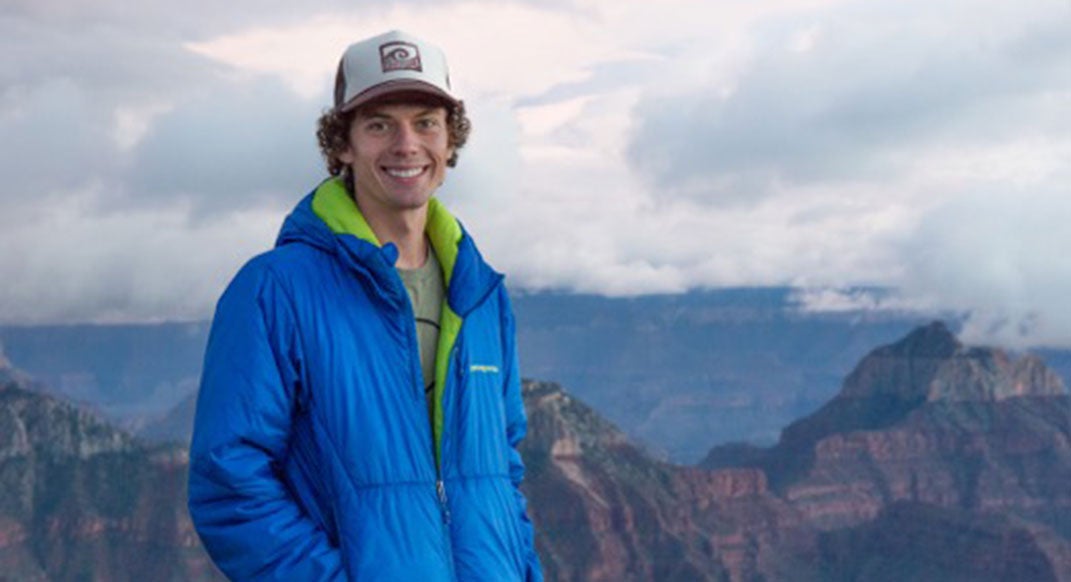Trail Running Is ... a Sport?

On April 9, Jim Walmsley, 26, of Flagstaff, Arizona, ran 6:00:52 at the Lake Sonoma 50-Miler to take home the gold and smash the previous course record by nearly nine minutes. Walmsley is now well on his way to the top of the trail-running food chain; three years ago, though, he didn’t even know competitive trail running was a thing.
Walmsley entered the United States Air Force Academy in Colorado Springs in 2009, and was a strong competitor on the track team, earning All-American status and qualifying for the 2012 Olympic Trials in the steeplechase. After graduating, he was stationed in Montana as part of a missile-combat crew, where he was constantly on call, sometimes working entire 24-hour shifts underground. He still signed up for occasional races, but, due to an irregular schedule and a stressful work environment, his motivation to train flatlined.
When he found time to get away, he began backpacking in Montana’s towering, jagged mountains. But he grew impatient with the slow pace of hiking. With limited time off and an urge to see as much of the wild state as he could, he began running the trails, covering 20-mile routes in hours instead of days.
“I didn’t know I was doing a legitimate sport at the time,” he says. “It was just a time saver and a coping mechanism.” But, as his runs progressed, the idea of racing on trails rekindled his competitive spirit.
In May 2013, he ran his first trail race, the Don’t Fence Me In 13K in Helena, Montana. The next year, he returned to win the 30K in 2:11:24, after running aggressively at the front of the pack. This strategy has continued to gain him trail-running trophies. He won the 2014 and 2015 JFK 50-Miler in Maryland, the 2016 Bandera 100K in Texas and the 2016 Moab’s Red Hot 55K in Utah, to name a few.
“It’s easy to let his laid-back personality fool you into thinking he’s going with the flow, but he’s tremendously ambitious and an aggressive competitor,” says Jeremy Drenckhahn, one of Walmsley’s close friends from the Air Force Academy. “He always talked about how racing from the front was the only way he felt fast.”
“I acknowledge sometimes it’s a dumb way to race,” Walmsley says. “But I’m OK with that. I would rather blow up trying than never go for the grand slam.”
After being discharged from the Air Force in March 2015, he moved to Flagstaff, Arizona, where he continued his ultra training while working for Absolute Bikes. Taking advantage of the 7,000-foot elevation, he focused on building strength through long miles. Before this year’s Lake Sonoma, he says he scheduled only one real “workout”: “I did a seven-mile threshold at 5:20-per-mile pace into a headwind, and then quit a mile earlier than planned because it was hard.”
At the race, Walmsley put his strategy to the test against a highly competitive field, breaking away from the lead group at mile 10. “‘Fearless’ would be a good way to describe his racing,” says Tim Freriks, Walmsley’s training partner, who ended up taking second at the same event, his first-ever trail race. “He isn’t afraid to run with anybody.”
Over the next 25 miles of winding climbs, lush forests and grassy fields, Walmsley built his lead. Then, at mile 35, his surge began to take its toll—fatigue set in and his confidence plunged. “I kept thinking Tim was going to catch me,” he says. “When I didn’t see him behind me at mile 45, though, I knew I wasn’t going to let anyone catch me. I definitely ran hungry.”
Walmsley plans on staying hungry for the Western States 100 on June 25, in Squaw Valley, California. He secured an automatic entry to the prestigious race—which will be his first 100-miler—after his first-place finish at Bandera.
His strategy? “I don’t really have one,” he says. “I do want to be patient in the race.”
He pauses, then adds, “But I plan on leading it, because you have to lead at some point if you want to win.”
This article originally appeared in our July 2016 issue.